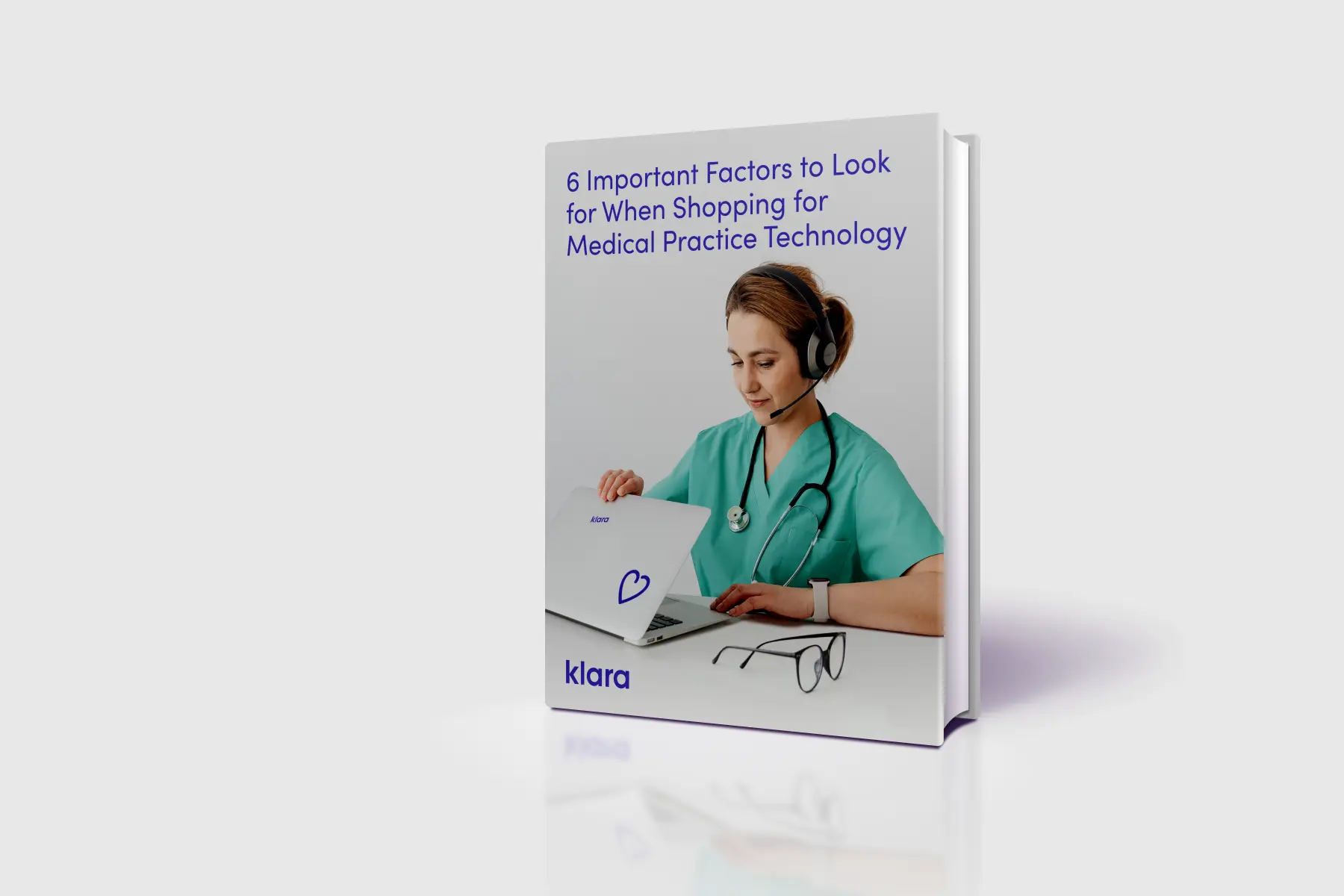Medical practices today are looking for technical solutions that can not only improve productivity but also increase revenue and raise the quality of care. Practices want to be able to focus on doing what they do best — delivering outstanding patient care and an excellent patient experience.
Unfortunately though, even with the introduction of new healthcare technologies over the years, operational inefficiencies remain highly prevalent for medical practices today — leading to high rates of physician and administrative burnout.
In order for practices to overcome these challenges, we must start with assessing common challenges across the patient journey and embracing the right technology solutions. As we look ahead, we need to consider the unique problems independent medical practices face, health IT best practices, and other trends that are rapidly redefining healthcare’s future.
Common problems affecting practice success
Regardless of specialty and size, most practices face the same challenges:
- Operational inefficiencies: According to Klara research, three hours is wasted per staff member per day on phone tag alone. What’s more, 50% of physicians’ time is spent on paperwork, while only 27% is spent on actual patient care. Busy work like this can cost physicians $50,000 per year on average.
- Call center inefficiencies: Call centers answer and triage patient calls that don’t need to be calls in the first place — things like getting test results, prescription refills, or rescheduling appointments. These lead to workflow inefficiencies, hours on the phone, and seemingly endless games of phone tag.
- Billing and payment-related issues: Rising operating costs, uncertainty around reimbursement rates, and outstanding patient balances all contribute to financial concerns.
- Poor patient communication and customer service: 96% of patient complaints are around poor communication and customer service, while only 4% are on clinical care.
Fortunately, technology can help streamline most — if not all — of these issues, helping practices save time and reclaim lost revenues.
For example, when a large dermatology group comprised of more than 70 locations throughout the northeast experienced tremendous growth, their call volume exploded and they were challenged by a variety of operational inefficiencies that resulted in cost increases with their call center and after-hours patient communication efforts.
For one, the dermatology group’s administrative staff spent too much time playing phone tag with patients about topics that did not require a call, such as rescheduling appointments, collecting insurance information, and answering general patient questions. Clinical staff members were also overwhelmed with playing phone tag with patients over refills and test results, as well as with third parties over things like prescriptions and prior authorizations.
As a result of these issues, they received patient complaints about long hold times and missed patient questions, saw more dropped calls, and consequently, needed to ramp up the call center and other support staff.
To solve these inefficiencies and recover lost revenue, the dermatology group decided to adopt new technology — which happened to be Klara. As a result, they were able to more efficiently respond to non-urgent patient requests via secure patient messaging. The results were impressive:
- Faster response times: The call center increased the speed of responding to incoming calls which reduced call abandonment rates.
- Less overhead: They needed less staff to handle the increasing volume of patient requests.
- High patient satisfaction: Patients love the convenience of texting with the practice.
- Fewer no-shows: After switching to Klara’s appointment reminders system and patient no-show re-engagement workflows, their no-show rates decreased by ~40%.
Best practices for selecting and implementing healthcare technology
At Klara, we strongly suggest that a practice’s “tech stack” — i.e. the technologies you use to run day-to-day operations — hit these characteristics:
- High patient adoption: The solution emphasizes the patient experience and patient adoption. After all, if a patient isn’t going to use or like a technology — or, if it creates a non-user-friendly experience (much like clunky patient portals) — patients will revert back to the phone and you’ll end up not solving your problem plus paying for another solution.
- Automation & Artificial Intelligence: Time-consuming tasks like calling patients and processing paperwork are replaced by automated workflows or even artificial intelligence to save time and money — all without sacrificing the patient experience.
- Interoperability: Seamless integrations with your EHR and PM system as well as other medical organizations (like pharmacies and labs) to de-silo communication and improve record-keeping, communication and collaboration.
- Security: This goes without saying, but a HIPAA-compliant provider with strong security standards (like two-factor authentication, for example) is a must.
- Scalability: Will the solution(s) still work for you as your practice grows?
What technology(ies) does your practice need?
So what tech solutions will benefit your practice? The technologies themselves vary based on practice needs, specialty, and size. That said, practices should tailor their search to cover key categories and features, as listed below:
Key technologies:
- EHR system: To manage clinical tasks such as documenting patient demographic and clinical information, ePrescribing, ordering labs, etc.
- Practice Management (PM) system: To manage administrative tasks such as appointment scheduling, insurance and eligibility, and billing. Often the PM system is already part of the EHR suite.
- Phone system: To handle inbound calls and place outbound calls, route calls, and track efficiency.
- Fax system: To exchange documents with third parties such as other medical organizations, insurance companies, pharmacies, etc.
- Patient engagement system: To dramatically improve operational efficiency, improve patient satisfaction, and increase revenue. These systems work by diverting the patient away from inefficient phone calls to methods most convenient to them. They also allow staff to easily engage with patients and collaborate on patient requests. Automations such as self-scheduling, intake, appointment reminders, and other touchpoints along the patient journey are usually built in to eliminate redundant manual tasks.
- Point-of-sale (POS) system: To collect patient payments in the office. Commonly offered within or integrated with the PM system.
- Eligibility and authorization system: To confirm patient eligibility, submit and manage prior authorization requests, etc.
- Marketing and lead generation system: To manage digital presence, generate and convert leads, and run and track campaigns.
- Internal communication system: To communicate within the team about non-patient-related matters such as office policies, team schedules, lunches, and events, etc.
- Employee management / HR solution: To manage payroll, benefits, workforce scheduling, etc.
- Other solutions: To manage other needs beyond what is stated above. Different organizations may have acute pain points for which they may purchase additional point solutions such as inventory management, balance collection, third-party contract management, etc.
Key features that should be covered by your technology providers:
- Integrations: No matter what tech solutions you use, make sure they can integrate seamlessly with each other so you don’t have to duplicate data entry, etc. At the very least, you’ll want integrations with your EHR and PM systems so you can continue to keep patient records accurate and up to date.
- Integration alternatives: If certain solutions do NOT integrate with one another, you should find ways to make them work together. For example, being able to generate links to a payment system or patient portal.
- Flexible communication options: Be able to communicate with patients more efficiently, with automated routine outreach options, the ability to text, personalization options, and more.
- Digitized workflow options: Streamline workflows and the patient experience simultaneously with solutions that digitize everyday tasks like appointment scheduling and reminders, patient intake, patient review collection, patient billing, staff collaboration, and more.
- Telemedicine: Launch a long-term telehealth program that’s convenient for patients and your staff.
- HIPAA compliance: Ensure patient privacy and security with tools that are HIPAA-compliant.
- Reporting and analytics: Built-in reporting and analytics tools to help you track successes, areas of improvement, and overall ROI.
- Dedicated support: Confirm that your tech providers offer dedicated support so you always have someone to contact with questions or issues.
Final Thoughts
At the end of the day, operational inefficiencies waste time and money for most practices today. On top of that, these inefficiencies lead to burnout for both physician and administrative staff, which remains a top issue for medical providers.
Fortunately, healthcare technology solutions, like Klara, are making consistent strides forward towards improving healthcare productivity and patient satisfaction. Advancements such as machine learning and artificial intelligence (AI) are being incorporated into technology platforms in order to completely automate workflows, eliminate hours of manual work for medical practice staff, and enable fast and easy communication between patients and care teams.
Moving forward, with the right technology solutions, medical practices will be able to fix patient communication issues, streamline care team collaboration, automate manual processes, and unify once-siloed systems. As a result, we expect the future of healthcare technology to be more streamlined, with medical practices opting for fewer solutions that do more with less learning curve and little effort.








